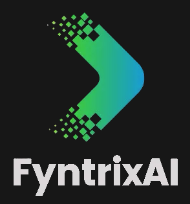Introduction to Ethereum
What is Ethereum?
Ethereum is a leading cryptocurrency and decentralized platform that enables the creation and execution of smart contracts and decentralized applications (DApps). It was introduced in 2015 by Vitalik Buterin, a prominent figure in the blockchain industry.
At its core, Ethereum is a blockchain-based platform that allows developers to build and deploy smart contracts, which are self-executing agreements with predefined conditions. These smart contracts run on the Ethereum Virtual Machine (EVM), a decentralized runtime environment that ensures the execution of code without any possibility of downtime, censorship, fraud, or third-party interference.
The Origins of Ethereum
The origins of Ethereum can be traced back to a whitepaper published by Vitalik Buterin in late 2013. The paper outlined the vision for a decentralized platform that goes beyond the capabilities of Bitcoin, the first cryptocurrency. Buterin proposed the idea of creating a platform that would allow developers to build applications on top of the blockchain, leveraging the power of smart contracts.
In 2014, Buterin co-founded Ethereum along with a team of developers and launched a crowdfunding campaign to raise funds for the project. The campaign was highly successful, with a significant amount of support from the cryptocurrency community. The funds raised during the campaign allowed the team to further develop and launch the Ethereum platform in July 2015.
Since its launch, Ethereum has gained immense popularity and has become one of the most widely used blockchain platforms. Its flexibility and programmability have attracted developers and businesses from various industries, paving the way for innovative applications and use cases.
To learn more about Ethereum, its price, wallets, mining, and investment opportunities, you can refer to our related articles on ethereum price, ethereum wallet, ethereum mining, and ethereum investment. If you’re interested in comparing Ethereum with Bitcoin, our article on ethereum vs bitcoin provides a detailed analysis of the two leading cryptocurrencies.
In the next sections, we will dive deeper into the technology behind Ethereum, its key features, applications, and the future developments that lie ahead. Stay tuned to uncover the full potential of this groundbreaking cryptocurrency.
Understanding Blockchain Technology
To grasp the concept of Ethereum, it’s important to first understand the basics of blockchain technology and how Ethereum differentiates itself from Bitcoin.
The Basics of Blockchain
Blockchain is a decentralized digital ledger that records transactions across multiple computers, known as nodes. Each transaction is grouped into a block and added to a chain of previous blocks, creating an immutable and transparent record of all transactions. The key characteristics of blockchain include:
-
Decentralization: Unlike traditional centralized systems, blockchain operates on a decentralized network where no single entity has control over the entire system. This enhances security, transparency, and eliminates the need for intermediaries.
-
Security: Blockchain employs cryptographic techniques to ensure the integrity and immutability of the data. Each block is linked to the previous block through a hash function, making it extremely difficult to tamper with the recorded transactions.
-
Transparency: All transactions recorded on the blockchain are visible to all participants in the network. This transparency promotes trust and accountability as anyone can verify the authenticity of transactions.
How Ethereum Differs from Bitcoin
While both Bitcoin and Ethereum are based on blockchain technology, they serve different purposes. Bitcoin primarily functions as a digital currency, whereas Ethereum is a decentralized platform that enables the execution of smart contracts and the development of decentralized applications (DApps). Here are a few key differences between Ethereum and Bitcoin:
| Aspect | Bitcoin | Ethereum |
|---|---|---|
| Primary Function | Digital Currency | Platform for Smart Contracts and DApps |
| Scripting Language | Limited scripting language | Turing-complete scripting language (Solidity) |
| Smart Contracts | Not native to Bitcoin | Native support for smart contracts |
| Flexibility | Limited programmability | Highly flexible and programmable |
| Transaction Speed | Slower transaction speed | Faster transaction speed |
| Development Community | Large and established community | Rapidly growing and innovative community |
Ethereum’s ability to execute smart contracts and support DApps opens up a wide range of possibilities beyond simple financial transactions. It allows developers to create decentralized applications that can automate complex processes, provide transparency, and eliminate the need for intermediaries. Ethereum’s scripting language, Solidity, enables developers to write custom code that can be executed on the Ethereum Virtual Machine (EVM).
Understanding the foundations of blockchain technology and the differences between Ethereum and Bitcoin sets the stage for exploring the key features, use cases, and the exciting future of Ethereum.
Key Features of Ethereum
To truly understand Ethereum, it’s essential to explore its key features that set it apart from other cryptocurrencies and blockchain platforms. These features include smart contracts, decentralized applications (DApps), and the Ethereum Virtual Machine (EVM).
Smart Contracts
One of the defining characteristics of Ethereum is its support for smart contracts. Smart contracts are self-executing agreements that automatically enforce the terms and conditions defined within their code. These contracts eliminate the need for intermediaries, such as lawyers or financial institutions, as the execution and enforcement of the contract terms are carried out by the Ethereum network.
Smart contracts on the Ethereum blockchain operate based on the principle of “code is law.” They can facilitate a wide range of functions, including financial transactions, asset transfers, and more. The decentralized nature of Ethereum ensures that these contracts are executed in a transparent, secure, and tamper-resistant manner.
Decentralized Applications (DApps)
Ethereum enables the development and deployment of decentralized applications, commonly referred to as DApps. DApps are applications that run on the Ethereum blockchain, leveraging its decentralized nature and smart contract functionality.
Unlike traditional applications that are controlled by a central authority, DApps are built on a distributed network of computers, ensuring transparency, immutability, and censorship resistance. DApps can serve various purposes, ranging from finance and gaming to identity verification and supply chain management.
Developers can utilize Ethereum’s programming language, Solidity, to create innovative DApps that harness the power of smart contracts. These applications offer users the benefits of blockchain technology, including enhanced security, data integrity, and autonomy.
Ethereum Virtual Machine (EVM)
The Ethereum Virtual Machine (EVM) is a fundamental component of the Ethereum network. It is a runtime environment that executes smart contracts and enables the operation of DApps. The EVM is designed to be Turing complete, meaning it can execute any algorithm or computation that can be expressed in code.
Smart contracts written in languages such as Solidity are compiled into bytecode, which can be executed by the EVM. This bytecode is executed by the network’s nodes, ensuring that the contracts operate consistently across the entire Ethereum network.
The EVM’s design allows for the development of complex and sophisticated applications on the Ethereum blockchain. It serves as the backbone of the decentralized ecosystem, enabling the secure and reliable execution of smart contracts and DApps.
Understanding these key features of Ethereum provides valuable insights into its capabilities and potential applications. By harnessing smart contracts, decentralized applications, and the Ethereum Virtual Machine, Ethereum has become a leading platform for innovation in the world of blockchain technology.
To learn more about Ethereum, you can explore topics such as ethereum price, ethereum wallet, and ethereum mining to deepen your knowledge about this dynamic cryptocurrency.
The Ethereum Network
As one of the leading cryptocurrencies, Ethereum operates on its own unique network that powers its functionalities and ecosystem. In this section, we will explore three key aspects of the Ethereum network: Ether (ETH) and Gas, the consensus mechanism, and Ethereum Improvement Proposals (EIPs).
Ether (ETH) and Gas
Ether (ETH) is the native cryptocurrency of the Ethereum network. It serves as the fuel that powers transactions and smart contracts on the platform. Similar to how Bitcoin is used as a digital currency, Ether is used as a medium of exchange within the Ethereum ecosystem.
Gas, on the other hand, is a unit used to measure the computational effort required to execute transactions or smart contracts on the Ethereum network. Every operation in Ethereum consumes a specific amount of gas, and users need to pay a certain amount of Ether as gas fees to incentivize miners to process their transactions. The gas fees can vary depending on the complexity and resource requirements of the transaction or smart contract execution.
To stay updated on the current price of Ether and monitor its market fluctuations, you can refer to our article on ethereum price. Additionally, if you’re interested in securely storing your Ether, you can explore different wallet options in our article on ethereum wallet.
Consensus Mechanism
The Ethereum network relies on a consensus mechanism called Proof of Stake (PoS) to validate and secure transactions. In PoS, instead of miners competing to solve complex computational puzzles like in Bitcoin’s Proof of Work (PoW), validators are chosen to create new blocks and validate transactions based on the number of Ether they hold and are willing to “stake” as collateral.
The shift from PoW to PoS is part of Ethereum’s ongoing upgrade known as Ethereum 2.0, which aims to improve scalability, energy efficiency, and transaction speed. This upgrade is expected to bring significant changes to the Ethereum network and address the limitations of the current consensus mechanism.
Ethereum Improvement Proposals (EIPs)
Ethereum Improvement Proposals (EIPs) are proposals for changes and enhancements to the Ethereum network. They are similar to Bitcoin Improvement Proposals (BIPs) and serve as a means for the community to discuss and suggest improvements to the protocol.
EIPs can range from technical upgrades to governance changes and are categorized into three types: standards, informational, and meta. Standards EIPs define new features or protocols, informational EIPs provide information or guidelines, and meta EIPs propose changes to the EIP process itself.
EIPs play a crucial role in shaping the future of Ethereum by enabling community collaboration and ensuring that the network evolves to meet the needs and challenges of its users. To learn more about the technical aspects of Ethereum and its underlying blockchain technology, you can explore our article on ethereum blockchain.
Understanding the concepts of Ether and Gas, the consensus mechanism, and Ethereum Improvement Proposals is essential in grasping the intricacies of the Ethereum network. These components contribute to the functionality, security, and future development of Ethereum as a leading cryptocurrency and platform for decentralized applications.
Use Cases and Applications of Ethereum
Ethereum, being a versatile blockchain platform, has found numerous use cases and applications beyond its role as a cryptocurrency. Let’s explore some of the key areas where Ethereum has made a significant impact.
Financial Applications
Ethereum has revolutionized the world of finance by enabling a wide range of financial applications. Through the use of smart contracts, Ethereum provides a secure and transparent way to facilitate financial transactions without the need for intermediaries.
Smart contracts on the Ethereum blockchain allow for the creation of decentralized financial applications, commonly referred to as decentralized finance or DeFi. These applications include decentralized lending and borrowing platforms, decentralized exchanges, stablecoins, and yield farming protocols. DeFi applications have gained immense popularity due to their potential to provide financial services globally, without relying on traditional institutions.
Decentralized Finance (DeFi)
Decentralized finance, or DeFi, is a term used to describe a broad range of financial applications that leverage blockchain technology and smart contracts to provide open and permissionless financial services. Ethereum, with its robust smart contract capabilities, has become the leading platform for DeFi applications.
DeFi applications built on Ethereum allow users to participate in activities such as lending, borrowing, staking, and yield farming, all without intermediaries. These applications operate autonomously, with transactions and agreements enforced by smart contracts. The transparency and accessibility of DeFi have attracted a large number of users and investors, driving the rapid growth of the DeFi ecosystem.
Non-Fungible Tokens (NFTs)
Non-fungible tokens, or NFTs, have gained significant attention in recent years, and Ethereum has played a crucial role in their development and adoption. NFTs are unique digital assets that can represent ownership of a specific item or piece of content, such as artwork, collectibles, virtual real estate, and more.
Ethereum’s ERC-721 and ERC-1155 token standards have provided the foundation for the creation and trading of NFTs. Artists, creators, and content owners can tokenize their work on the Ethereum blockchain, granting them verifiable ownership and enabling the buying and selling of these unique assets on various NFT marketplaces.
NFTs have opened up new avenues for creators to monetize their work and have given collectors a way to own and trade digital assets securely. The popularity of NFTs continues to grow, with high-profile sales and collaborations capturing mainstream attention.
By enabling financial applications, DeFi, and the explosion of NFTs, Ethereum has demonstrated its versatility and potential for innovation. As the Ethereum ecosystem continues to evolve, we can expect to see even more exciting use cases and applications emerge in the future.
The Future of Ethereum
As one of the leading cryptocurrencies, Ethereum continues to evolve and pave the way for the future of blockchain technology. In this section, we will explore the upcoming updates and improvements in the Ethereum ecosystem, as well as the potential challenges and opportunities that lie ahead.
Upcoming Updates and Improvements
The Ethereum community is committed to ongoing development and improvement of the platform. There are several significant updates and improvements in the pipeline that aim to enhance the scalability, security, and functionality of Ethereum. Some of the notable developments include:
-
Ethereum 2.0 (Eth2) and Proof of Stake (PoS): Ethereum is transitioning from its current Proof of Work (PoW) consensus mechanism to a more energy-efficient Proof of Stake (PoS) consensus mechanism. The implementation of Ethereum 2.0 aims to improve scalability, reduce transaction costs, and increase network security. This upgrade will be rolled out in multiple phases, with the first phase already underway.
-
Sharding: Sharding is another crucial component of Ethereum 2.0 that aims to enhance scalability. By dividing the Ethereum network into smaller, more manageable parts called shards, the network will be able to process multiple transactions simultaneously, significantly increasing its capacity.
-
EIP-1559 and Fee Market Reform: EIP-1559 proposes changes to the Ethereum fee structure, introducing a new mechanism to burn a portion of the transaction fees. This update aims to improve the user experience by making transaction fees more predictable and reducing network congestion.
-
Layer 2 Solutions: Layer 2 solutions, such as Optimistic Rollups and Plasma, aim to address the scalability limitations of the Ethereum network. These solutions enable faster and more cost-effective transactions by processing them off-chain while still benefiting from Ethereum’s security.
Potential Challenges and Opportunities
While Ethereum has achieved significant milestones, it also faces challenges that need to be addressed to ensure its future success. Some of the potential challenges and opportunities for Ethereum include:
-
Scalability: As the popularity of Ethereum grows, scalability becomes a critical factor. The implementation of Ethereum 2.0, including sharding and layer 2 solutions, aims to address this challenge. However, the success of these solutions and their adoption by the community will play a crucial role in determining Ethereum’s scalability.
-
Competition from Other Platforms: Ethereum faces competition from other blockchain platforms that offer similar functionality and features. Rival platforms such as Binance Smart Chain, Cardano, and Polkadot are working to attract developers and users with their own unique selling points. Ethereum will need to continue innovating and improving to maintain its competitive edge.
-
Regulatory Environment: The regulatory landscape surrounding cryptocurrencies and blockchain technology continues to evolve. Regulatory developments and government interventions can impact the growth and adoption of Ethereum. It is essential for Ethereum to navigate these regulatory challenges while maintaining a secure and decentralized network.
-
Interoperability and Cross-Chain Compatibility: The ability to communicate and interact with other blockchain networks is crucial for the overall growth and adoption of Ethereum. Interoperability protocols and cross-chain compatibility solutions, such as the Ethereum Virtual Machine (EVM) compatibility on other platforms, can open up new opportunities for Ethereum and foster collaboration between different blockchain ecosystems.
By staying at the forefront of technology and addressing these challenges, Ethereum has the potential to revolutionize various industries and shape the future of decentralized applications, finance, and much more.
As Ethereum continues to evolve and adapt, it remains an exciting and dynamic space for innovation and development. Keeping an eye on the upcoming updates and improvements, as well as the potential challenges and opportunities, will provide valuable insights into the future of this leading cryptocurrency.






